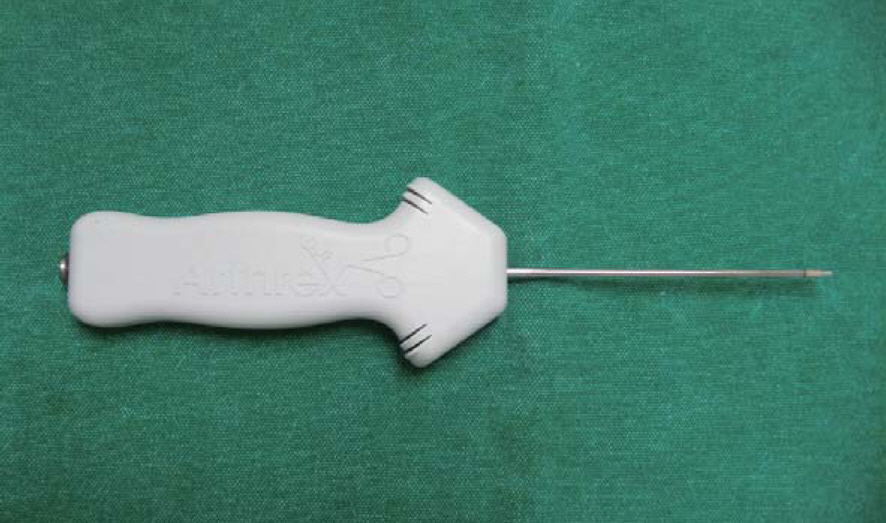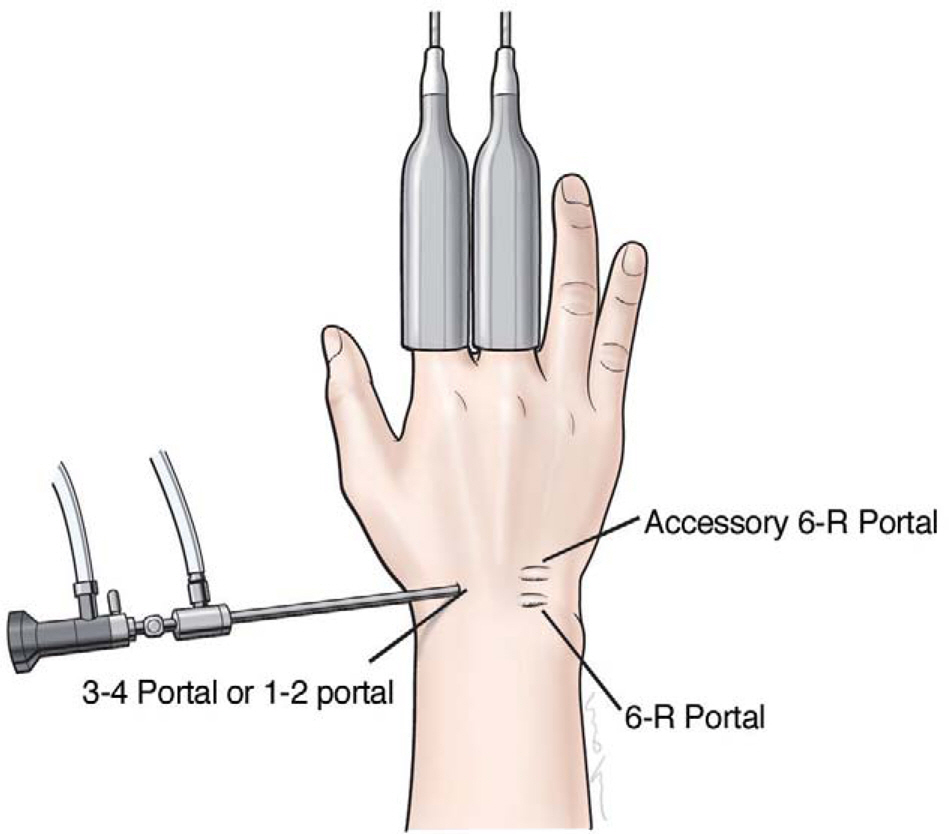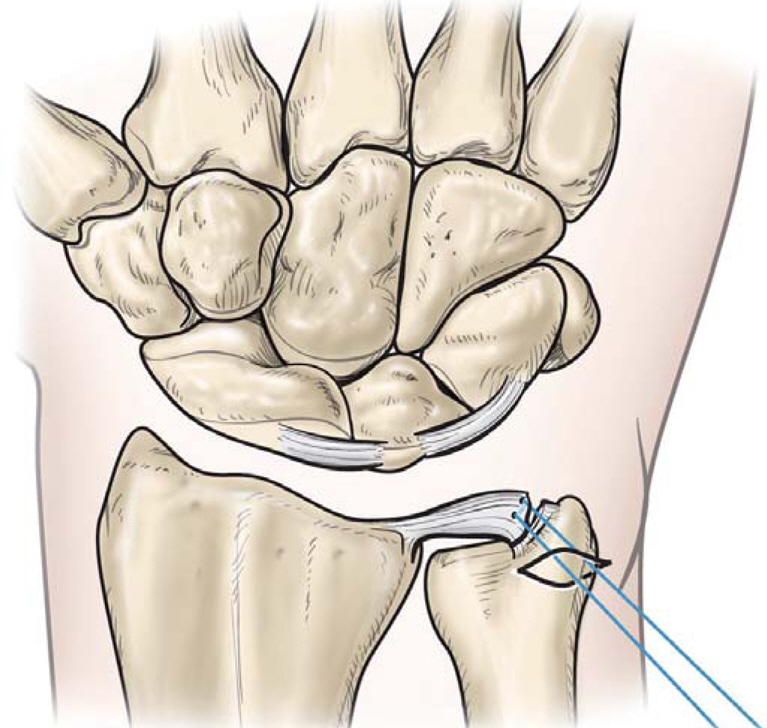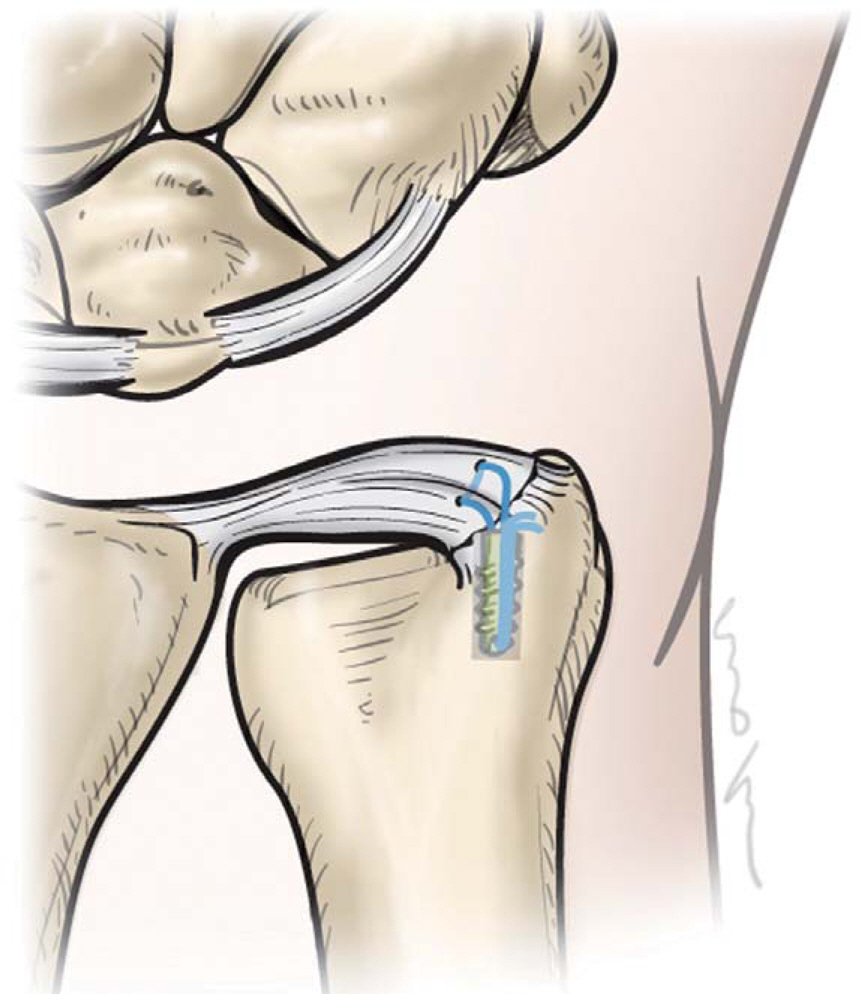J Korean Soc Surg Hand.
2014 Jun;19(2):103-108. 10.12790/jkssh.2014.19.2.103.
Surgical Technique for Repairing Foveal Tear of the Triangular Fibrocartilage Complex: Arthroscopic Knotless Repair
- Affiliations
-
- 1Department of Orthopedic Surgery, Ewha Womans University School of Medicine, Seoul, Korea. kimjk@ewha.ac.kr
- KMID: 2097616
- DOI: http://doi.org/10.12790/jkssh.2014.19.2.103
Abstract
- Knotless repair of triangular fibrocartilage complex has several advantages. All procedures for triangular fibrocartilage complex repair could be done under arthroscopy in this technique. In addition, this technique allows for repair of deep layers of triangular fibrocartilage complex down to fovea of the ulnar head. This article describes arthroscopic repair of the Palmer type 1B triangular fibrocartilage complex tear using arthroscopic knotless technique.
MeSH Terms
Figure
Reference
-
1. Yao J. All-arthroscopic triangular fibrocartilage complex repair: safety and biomechanical comparison with a traditional outside-in technique in cadavers. J Hand Surg Am. 2009; 34:671–6.
Article2. Thiru RG, Ferlic DC, Clayton MI, McClure DC. Arterial anatomy of the triangular fibrocartilage complex: its clinical significance. J Hand Surg Am. 1986; 11:258–63.3. Bednar MS, Arnoczky SP, Weiland AJ. The microvasculature of the triangular fibrocartilage complex: its clinical significance. J Hand Surg Am. 1991; 16:1101–5.
Article4. Nakamura T, Yabe Y, Horiuchi Y. Functional anatomy of the triangular fibrocartilage complex. J Hand Surg Br. 1996; 21:581–6.
Article5. Nakamura T, Makita A. The proximal ligamentous component of the triangular fibrocartilage complex. J Hand Surg Br. 2000; 25:479–86.
Article6. Kleinman WB. Stability of the distal radioulna joint: biomechanics, pathophysiology, physical diagnosis, and restoration of function what we have learned in 25 years. J Hand Surg Am. 2007; 32:1086–106.
Article7. Nakamura T, Sato K, Okazaki M, et al. Repair of foveal detachment of the triangular fibrocartilage complex: open and arthroscopic transosseous techniques. Hand Clin. 2011; 27:281–90.
Article8. Atzei A, Luchetti R. Foveal TFCC tear classification and treatment. Hand Clin. 2011; 27:263–72.
Article9. Chou KH, Sarris IK, Sotereanos DG. Suture anchor repair of ulnar-sided triangular fibrocartilage complex tears. J Hand Surg Br. 2003; 28:546–550.
Article10. Hermansdorfer JD, Kleinman WB. Management of chronic peripheral tears of the triangular fibrocartilage complex. J Hand Surg Am. 1991; 16:340–6.
Article11. Atzei A, Rizzo A, Luchetti R, Fairplay T. Arthroscopic foveal repair of triangular fibrocartilage complex peripheral lesion with distal radioulnar joint instability. Tech Hand Up Extrem Surg. 2008; 12:226–35.
Article12. Desai MJ, Hutton WC, Jarrett CD. Arthroscopic repair of triangular fibrocartilage tears: a biomechanical comparison of a knotless suture anchor and the traditional outside-in repairs. J Hand Surg Am. 2013; 38:2193–7.
- Full Text Links
- Actions
-
Cited
- CITED
-
- Close
- Share
- Similar articles
-
- Surgical Techniques for Repairing Foveal Tear of the Triangular Fibrocartilage Complex: Arthroscopic Transosseous Repair
- The Short Term Results of All-inside Arthroscopic Repair of the Triangular Fibrocartilage Complex Type 1B Tear by Knotless Suture Anchor
- Open Repair of Triangular Fibrocartilage Complex Type 1B Tear
- Arthroscopic Repair of Triangular Fibrocartilage Complex Tear
- Arthroscopic Repair for Traumatic Peripheral Tear of Triangular Fibrocartilage Complex








